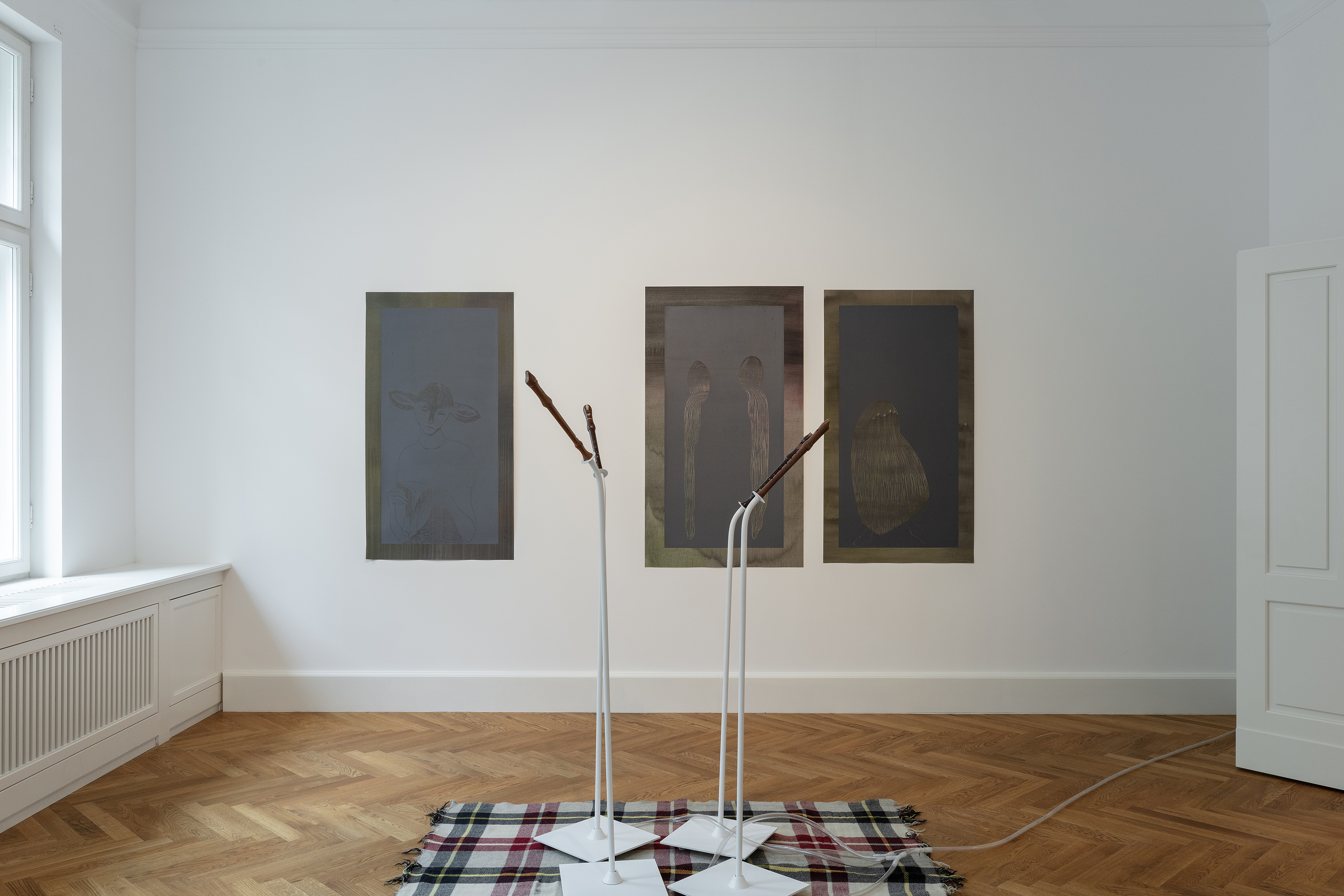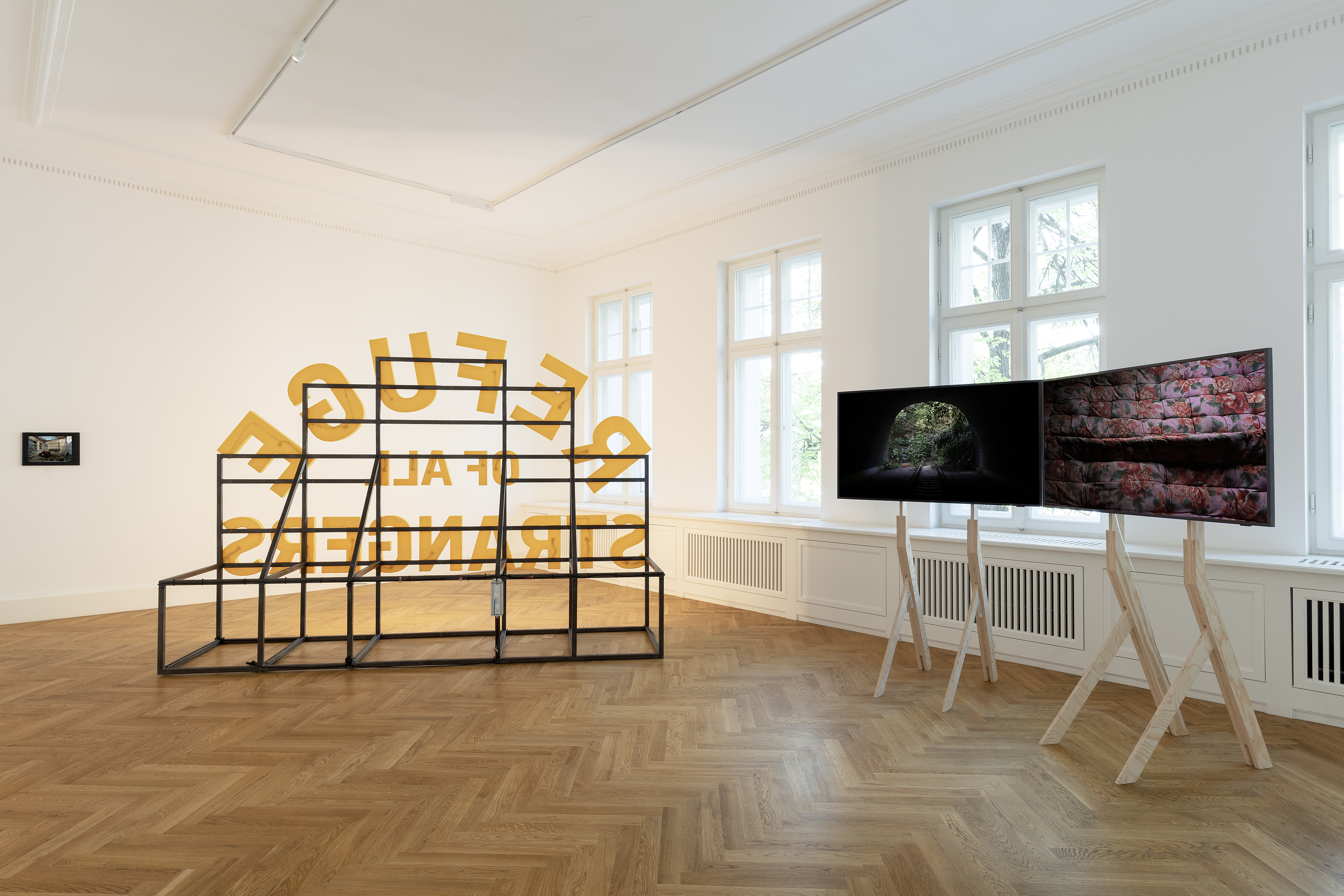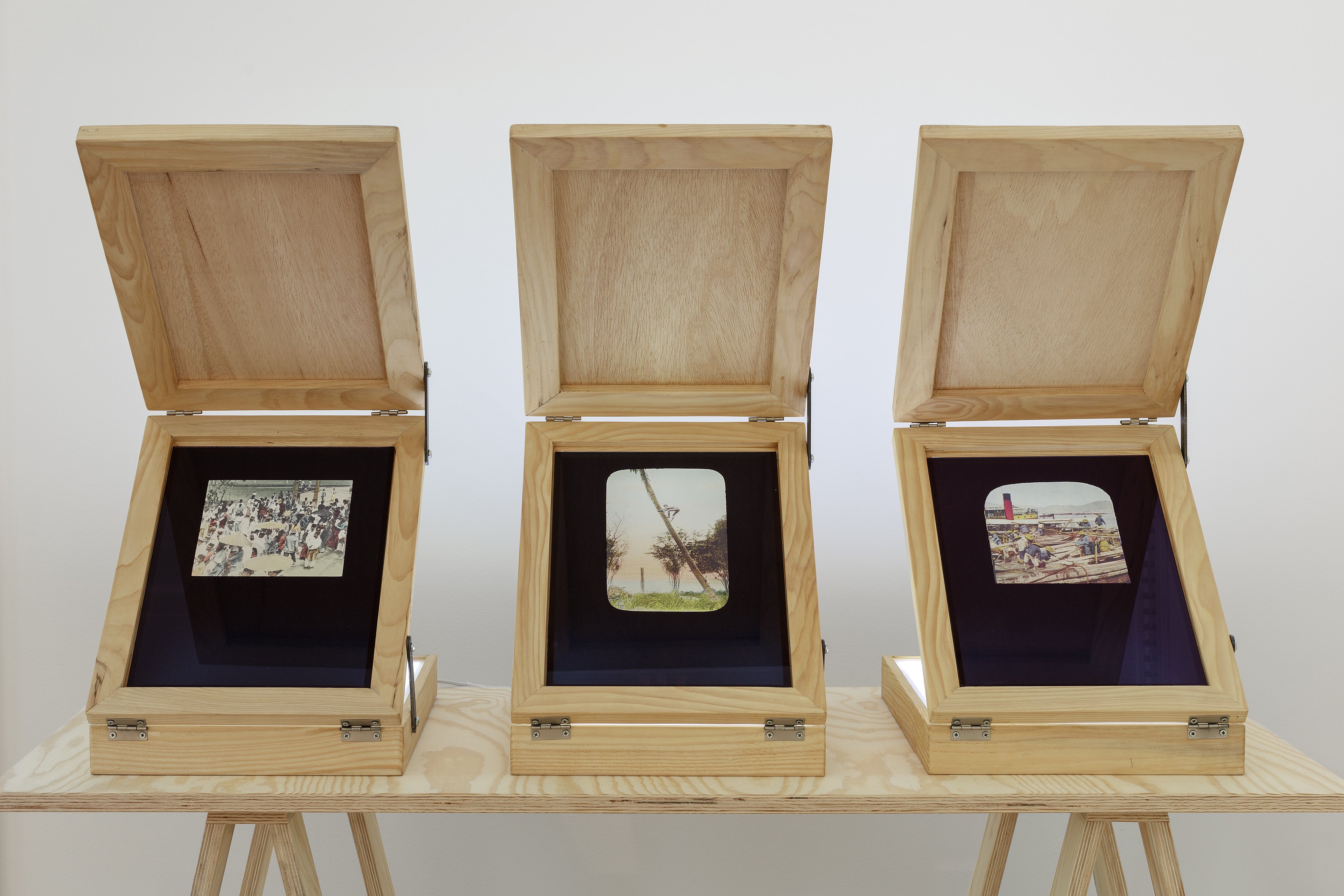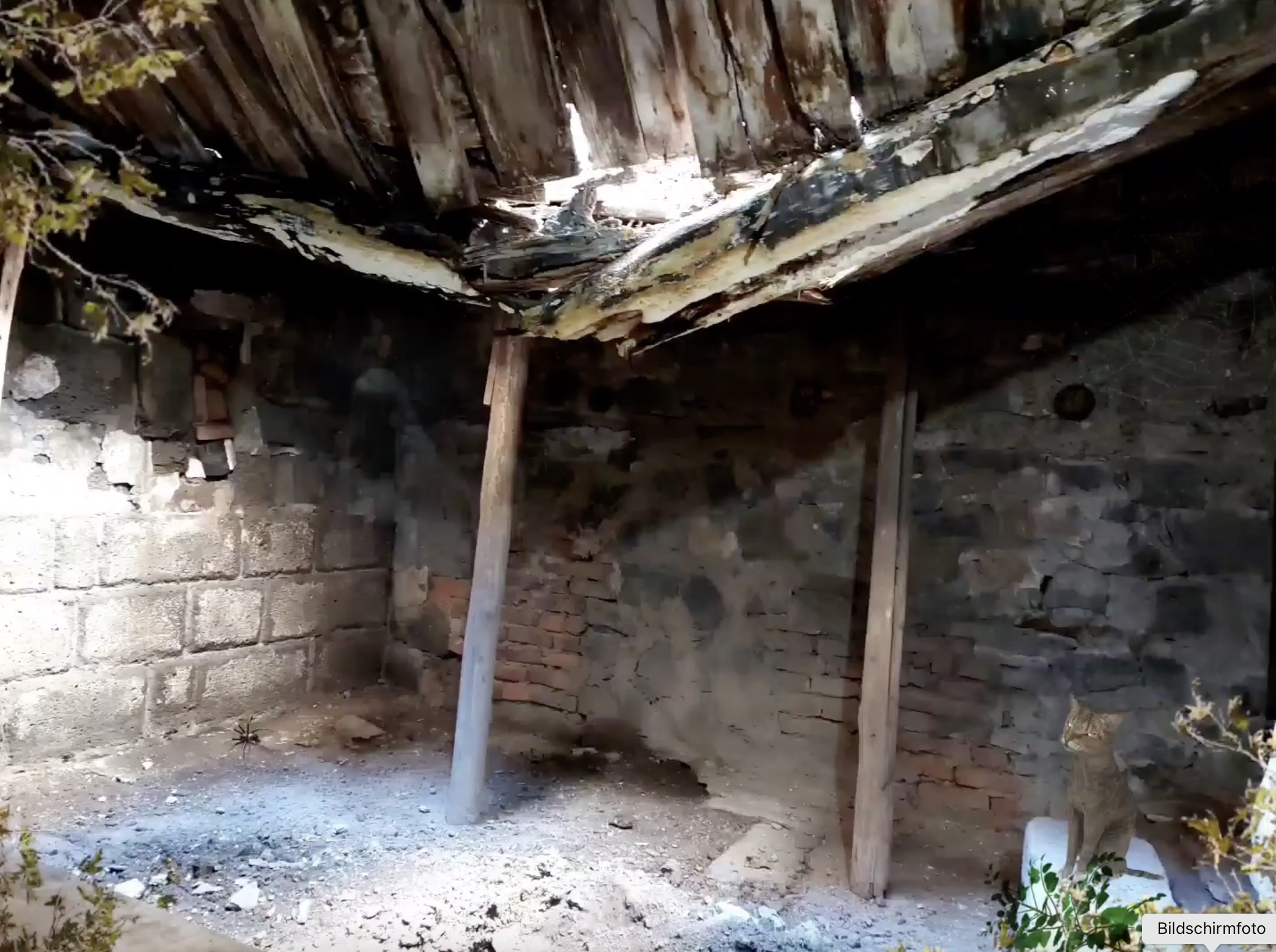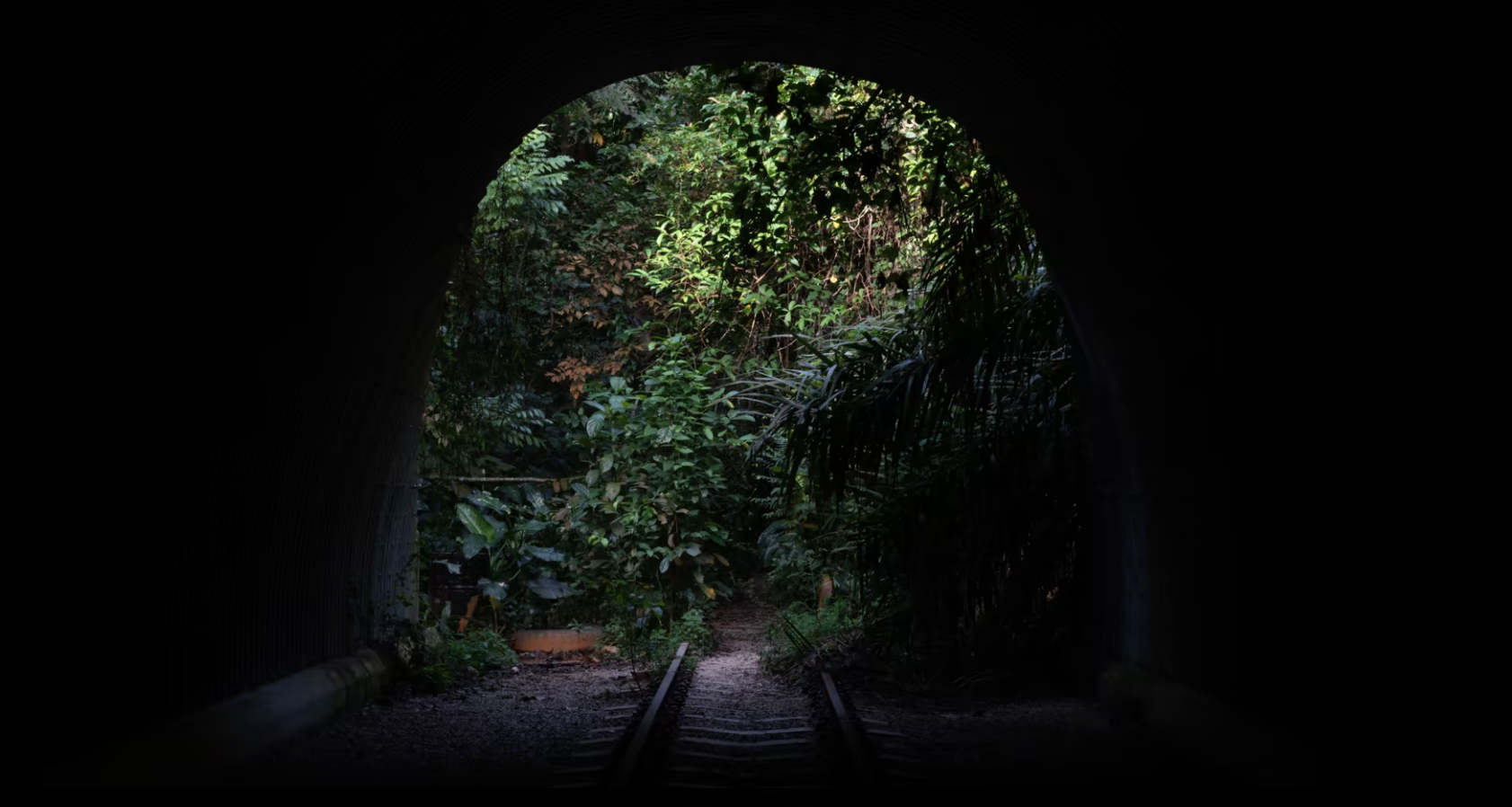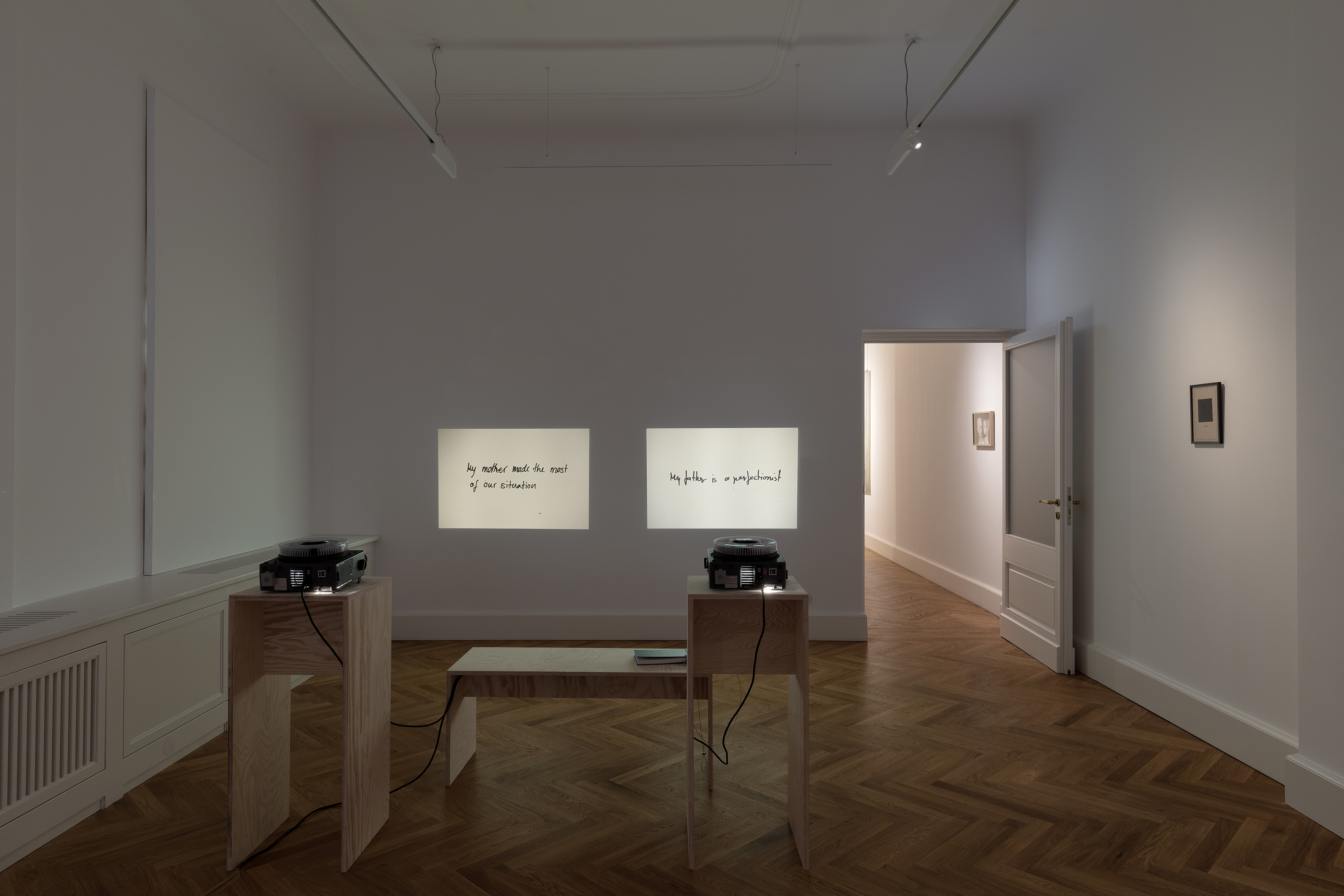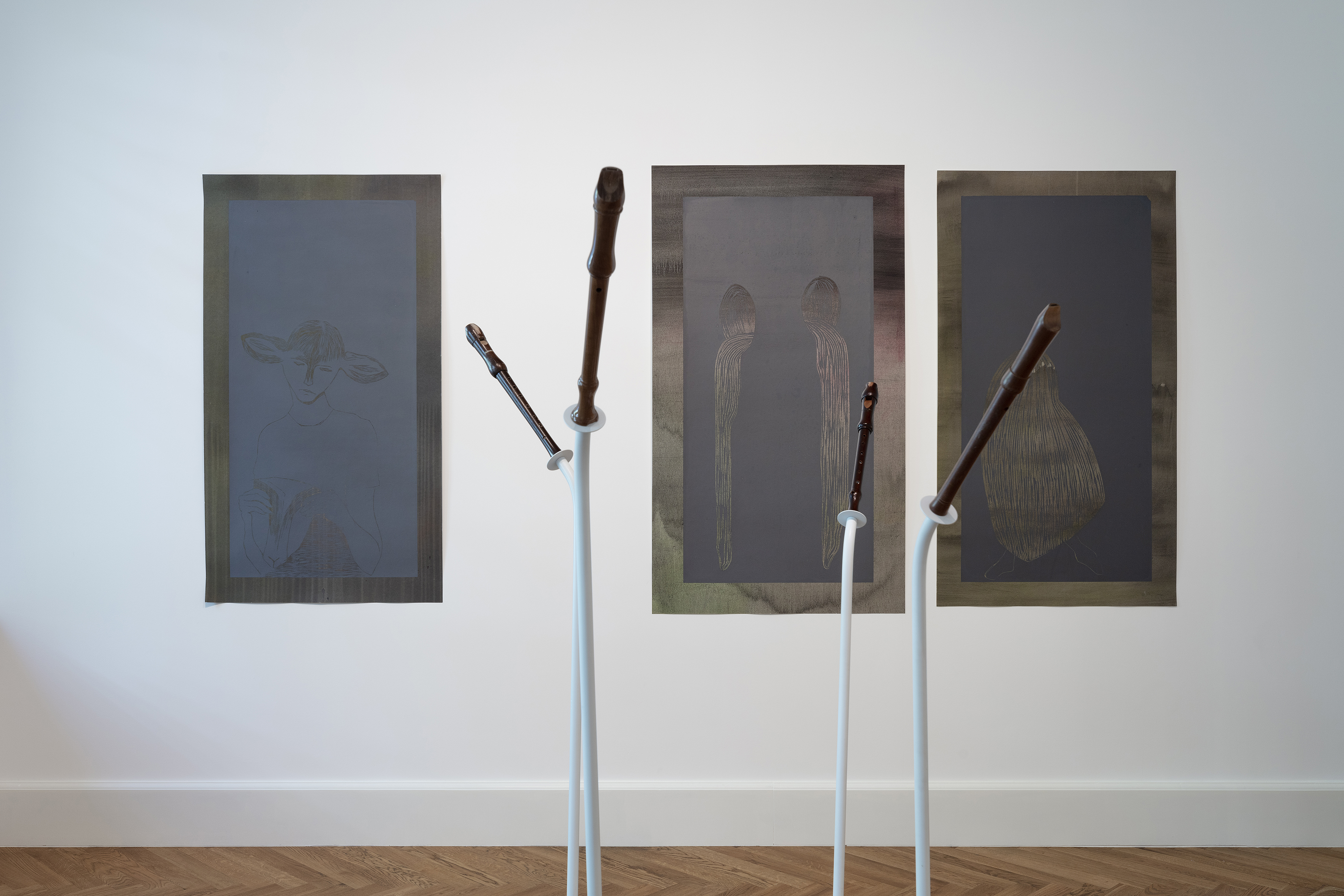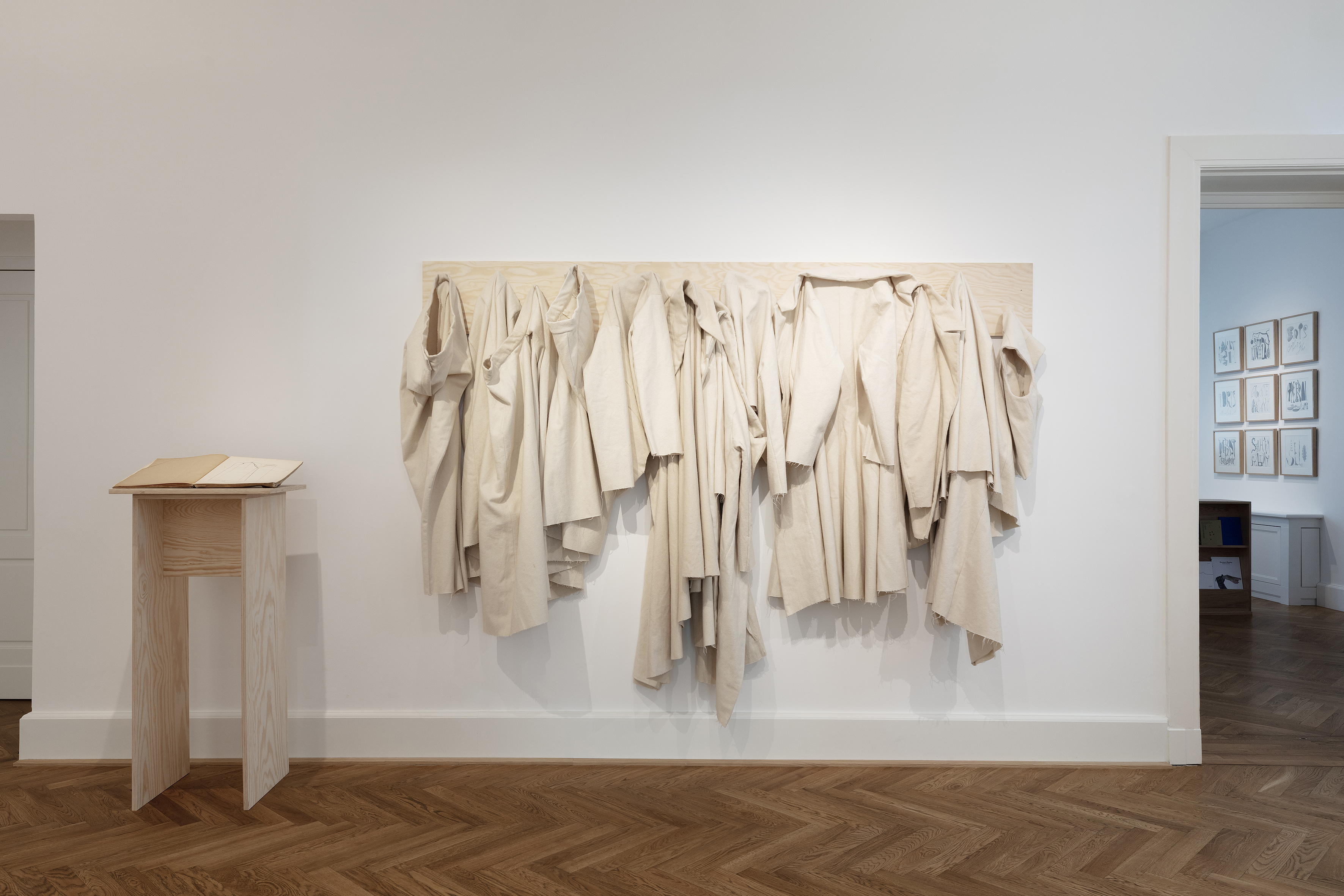Transit
29/04/2023 - 29/07/2023
Zilberman | Berlin is delighted to announce the opening of its new space in Berlin’s Schlüterstraße 45 with the exhibition Transit. Curated by Lotte Laub and Susanne Weiß, Transit brings together works by Yane Calovski & Hristina Ivanoska, Antje Engelmann, Memed Erdener, Hanna Frenzel, Itamar Gov, Fatoş İrwen, İz Öztat & Zişan & BAÇOY KOOP, Judith Raum, Sim Chi Yin, and Annette Weisser.
“O imperial City,” I cried out, “City fortified, City of the great king, tabernacle of the most High, praise and song of his servants and beloved refuge for strangers, queen of the queens of cities, song of songs and splendor of splendors, and the rarest vision of the rare wonders of the world, who is it that has torn us away from thee like darling children from their adoring mother? What shall become of us?”
With these lines, the Byzantine historian Niketas Choniates in 1204 bewailed the devastating conquest and plundering of Constantinople in the Fourth Crusade. He himself would not live to see Istanbul later, under the Ottoman Empire, grow yet more fully into its role as a sanctuary for strangers from all over the world—until the tides turned once again in the 20th century. With the founding of Turkey as a nation-state, major demographic upheavals were brought about forcibly through violent mass displacements. REFUGE OF ALL STRANGERS is the title of an installation by Itamar Gov, which we exhibit in Transit. Those words are displayed in a neon sign mounted on scaffolding, recalling the signs mounted on the roofs of old hotels that offered both orientation and promise to passers-by. Gov’s neon sign remains ambivalent: it points to the chasm between the promise of a sanctuary for all strangers and the condition of being a stranger in exile (on the run from what was home). It can, however, also be understood as an invitation to view art as the place of refuge where what has been lost, forgotten, or passed over in silence can be preserved for the generations that follow.
Heinz Rewald took refuge from the persecution of National Socialist Germany in Bogotà. Returning to Berlin in 1964, he founded the Hotel Bogota in the Schlüterstraße 45 to pay homage to the city in which he found sanctuary in dire need. In 1976, the hotel was taken over by the Rissmann family and operated by their son Joachim Rissmann through 2013. Our exhibition also shows archival material provided by Rissmann on the history of the building. Itamar Gov’s work finds an echo in the history of this hotel—but also in the fact that the businessman M. Nedim, who is listed in 1921 as owner and resident of the then residential building, emigrated to Constantinople in 1922.
In the 1930s, the successful fashion photographer Yva (Else Ernestine Neuländer) had her studio in the same building. In the exhibition, several photographs of Yva from the private collection of Joachim Rissmann are shown. Being Jewish, she was prohibited from working after 1938 by the National Socialist employment ban. In 1942, she and her husband were arrested by the Gestapo, deported to the extermination camp Sobibor and murdered in Majdanek. The house in the Schlüterstraße was nationalized in 1942 and became occupied by the Reichskulturkammer (Reich Chamber of Culture). After the end of the Second World War, the British occupying authorities established a de-nazification agency in the building. Soon thereafter, the Kammer der Kulturschaffenden (Chamber of Creative Artists) was founded, which in 1945 organized the first post-war exhibition showing art qualified as “degenerate” by the Nazis.
Anna Seghers wrote her novel Transit in flight, fearing imminent capture by the Nazis, and completed it in exile in Mexico. “Everything was in flight, everything was only temporary. But we didn’t know yet whether this condition would last until tomorrow, for another few weeks or years, or for the rest of our life.” Transit refers, on the one hand, in the context of exile, to the transit visum every emigrant needed, and on the other to the state of transition in which the refugees found themselves; at the same time, it evokes the transitory, ever-at-risk quality of human existence. Life in transit becomes, in Seghers’ work, the subject of intense reflection. The exhibition Transitaddresses the transgenerational passing-on of lived experience; what is absent is rendered visible, even tangible by the works we exhibit.
Sim Chi Yin uses the long-concealed history of her paternal grandfather as a departure point to speculate around trans-generational memory and inheritance. A left-wing journalist and activist in the anti-colonial war in British Malaya, he was deported by the British in 1949 to his ancestral village in China, where he was executed by the nationalist Kuomintang shortly before the Communists seized power. Sim rescues this history from the oblivion to which her family’s silence had destined it, so that she can pass it on to her young son, who bears his great-grandfather’s name. In a two-channel video installation, the artist patches together traces of her grandfather’s possible last journey from Malaya, and also evokes the place where he began life and ended it: China. The film’s motif of a tunnel can also be understood a conjuring of time travel. Sim’s interventions into Magic Lantern slides from the 1900s depicting Southeast Asia are also a form of time travel in the archives.
Fatoş İrwen, too, follows the traces of her grandfather, paying a visit to his now dilapidated house in the war-torn city of Diyarbakir in Turkey. An open book, its pages fluttering in the wind, bears witness to a scholarly life. In 2017, Fatoş İrwen was herself arrested and detained, without any credible showing of evidence, under Turkey’s broadly formulated anti-terrorism laws, as many other Kurds and opponents of the current regime have been. While in prison she created a number of works using paper, which she died the color of skin with tea, sewing tears in the paper with women’s hair. These delicate works evoke the impression of sutured wounds, oscillating between the experience of violence and an attempt at self-healing.
Zişan (1894–1970), who fled from Istanbul to Berlin in 1915, appears to İz Öztat as a ghost and alter ego, returning in the present to address the denial of the Armenian Genocide. Zişan’s work Felaket dates from 1923, the year in which the Republic of Turkey was founded, marking the beginning of a century overflowing with catastrophes. Öztat treats Zişan’s Catastrophe, a black square, as the point of departure for her in situ installation, entitled After. To confront the impossibility of representing and mourning a century of systematic state violence, Öztat resorts to geometric abstraction. Red triangles, enclosing black squares, stand side by side and evoke collective actions demanding justice for enforced disappearances. Öztat’s installation contains, among other works, a body of prints collectively produced by BAÇOY KOOP. The prints’ format and images refer to the practice, called birding, for distributing flyers containing dissident content. Thrown into the air over a large crowd, the flyers would be dispersed like a flock of birds and the author, protected by the flock, would remain unidentifiable. The work poetically stages the longing for freedom of expression in public space.
Memed Erdener’s Some Days Were Missing Last Year (2015) is composed of 33 ladies’ shoes and a billy club. It likewise recalls state-sponsored violence and the regular protest and memorial actions carried out by the “Saturday Mothers” in Turkey following the military putsch of 1980. In a manifesto, which the artist published in 2012 under the pseudonym Extramücadele (Extrastruggle), Erdener dreams of a country in which justice, equality, and liberty reign. He criticizes all mechanisms of oppression, whether practiced in history or the present day, holding that any and every domination of some people by others is damned to end in injustice, inequality, and oppression. For this reason, the battle is one that must be waged—not externally (Extrastruggle)—but internally (Intrastruggle). During his 2018 artist residency in the Zilberman Gallery, Erdener created a series of drawings that use calligraphy to treat the signatures of various artists and art professionals imprisoned in Turkey, including Fatos Irwen as well as human rights activist and patron of the arts Osman Kavala. The letters of their names, transformed into images recall medieval books of hours, and encourage the viewer to decode a hidden message.
The very first room of the exhibition, which is itself a passageway, features various articles of clothing made of raw wool hanging one next to another on hooks, as in a wardrobe. This sculptural wall installation, entitled Wayside (Antoinette van Eyck's Collection of Garments), was created by the artist couple Yane Calovski and Hristina Ivanoska, who, in their collaborative work, often focus attention on events (and archives) that have fallen by the wayside of history or were not meant to be remembered as official narratives. This is the case of the accidentally discovered sketchbook of clothing patterns drafted by a Dutch woman named Antoinette van Eyck from 1935; Calovski found and bought the book in Maastricht in 2003. The final and unfinished sketch is captioned by an emotional remark: “That's enough,” which can be understood as youthful impatience or as the social frustration experienced by a gifted but disadvantaged tailor's apprentice. This remark also gives us a glimpse of the socio-political horror that will unfold with the forthcoming World War II from a young woman's perspective. The artists have realized a selection of van Eyck's clothing patterns aimed at dressing the modern woman in larger-than-life dimensions, thus elevating them above time and fashion. The material they used likewise marks the end of an era. The wool fabric, actually intended for use in the rising of bread dough, comes from the now defunct textile factory Teteks, which in Macedonia’s socialist era formed the basis of the economy for the population of Tetovo. The original sketchbook complements the installation.
Another aspect of the transitory is the liminal—a threshold state. Visitors will see evocations of this state in, for instance, Judith Raum’s transgression of the boundary between man and animal; in the metamorphosis of everyday objects placed in surreal contexts, as with Mehmed Erdener’s Rind and Zahid or Antje Engelmann’s Die große Mutter; and in Annette Weisser’s installation, which deals with the rebellion that marks the passage from childhood to adolescence.
Judith Raum’s four colored-pencil drawings, titled Iguana, pick up on motifs from the 1965 novel of the same name by Italian writer Anna Maria Ortese (1914–1988) and show us a choreography of desire. In her novel, Ortese connects questions being posed in the discourse on ecology with the sketching of a sexuality that transgresses prevailing norms. Iguana describes in detail the vulnerable being of a female iguana, who lives on a hitherto unmapped island called Ocaña in slave-like conditions and yet dares to make efforts at rebellion. The book treats the desire felt by a rich count, who determines to liberate Iguana from her existence as a slave by purchasing her freedom, as a metaphor for the loss of the natural interactions between animals and men, which were increasingly perverted in the course of the 20th century. At the same time, it reflects on expanded forms of eroticism and love. In her large-format drawings, Raum’s lucid layerings of color reinforce the ambiguity of the subject and the fable-like character of her literary source.
Clichés serve both as printing blocks and as traditional ideas about how we orient our society. Antje Engelmann takes the concomitant images and surgically dissects them into their constituent elements using various media—from video to photography and collage to performance. At the center of her humorous and unsparing investigations lies the question of the extent to which her family—originally Danube Swabians (German settlers of the Danube valley under the Hapsburg Empire)—have passed on over four generations a traumatic experience of persecution and flight which they have never adequately dealt with head-on. In Die große Mutter (“Big Mother”), Engelmann appears at first glance to address our iconographic associations of purity and immaculate conception with the figure of Madonna. But then, when she drapes the strudel dough they have just finished stretching out together over her aunt Renate, traditions and the body enter into a close, material relationship with each other. The transparent dough becomes like a friable second skin, which scarcely leaves room to breathe. In this way, Engelmann undermines the motif of the Madonna, whose complexity has been curtailed, and traces the questions about shame and guilt directly back to their source in the family.
In the salt mines of Asse, performance artist Hanna Frenzel stands 1995 in a plexiglass pipe and lets herself be covered up to the neck with salt. She is literally petrified into a pillar of salt. In contrast to the visible trickling of an hourglass, the salt here escapes only slowly and imperceptibly. Frenzel’s film Chronos shows this performance, which took place 500 meters beneath the Earth’s surface in a vaulted salt chamber that since 1995 has served as disposal site for nuclear waste. With her performance, Frenzel updates the biblical story of how Lot’s family was saved from the destruction of the sinful cities Sodom and Gomorrha—on condition that they do not look back during their flight. When Lot’s wife looks back, she is turned into a pillar of salt. The oscillation between hardship and liberation characterizes human history—or, in the alternative: enduring hardship can make liberation possible.
Annette Weisser’s artistic practice is similarly concerned with the motif of endurance in the context of societal conventions. One recurrent figure in her work is the good, conformist girl playing a recorder. At the heart of her installation Ghosts, Gates, Spills, and a Fog Machine, we see a group of four recorders, which exhale little clouds of smoke from time to time. The musicians—whose names Inga, Kathrin, Judith, Christin lend the work its title—are absent, and yet present, too. The use of our own breath creates a special relationship between us and all wind instruments—and the consumption of smoking products likewise depends on the breath of the smoker. In their societal connotations, however, the playing of a recorder and smoking are diametrically opposed. Weisser here alludes to the transition from childhood to adolescence, where smoking is often practiced as a symbol of rebellion against societal expectations. The image of the smoking recorder is thus an image of transit.
Accompanying the exhibition Transit, a catalogue edited by Lotte Laub and Susanne Weiß will be published.
For the opening of Transit on 29 April, 2023, Zilberman | Berlin will present ITINERANT INTERLUDE #45 a music program specially created for the exhibition with performances by violonists Ali Moraly and Markéta Janoušková beginning at 7pm. The series ITINERANT INTERLUDES is curated by Laurie Schwartz and made possible with support from the initiative neue musik berlin.
Saturday, 29.04.2023
11–20.30h: Opening
12h: Exhibition tour with Lotte Laub ] Susanne Weiß in presence of the artists
19 h: ITINERANT INTERLUDE #45: Performances by violonists Ali Moraly & Markéta Janoušková
Saturday, 3 June:
16h: Guided Tour w/ Lotte Laub & Susanne Weiß
18h: Panel w/ Antje Engelmann, Hanna Frenzel, Itamar Gov, Judith Raum, Annette Weisser, moderated by Lotte Laub & Susanne Weiß
Sunday, 16 July:
15h: Guided Tour w/ Lotte Laub & Susanne Weiß
Friday, 28 July:
18h: Finissage & Catalogue Launch w/ Yane Calovski & Hristina Ivanoska, Antje Engelmann, Hanna Frenzel, Itamar Gov, Iz Öztat, Annette Weisser, moderated by Lotte Laub & Susanne Weiß
» BUNLARI DA GÖRÜN
Sanatçı Sayfaları
- Yane Calovski
- Sim Chi Yin
- Memed Erdener
- Itamar Gov
- Fatoş İrwen
- İz Öztat



